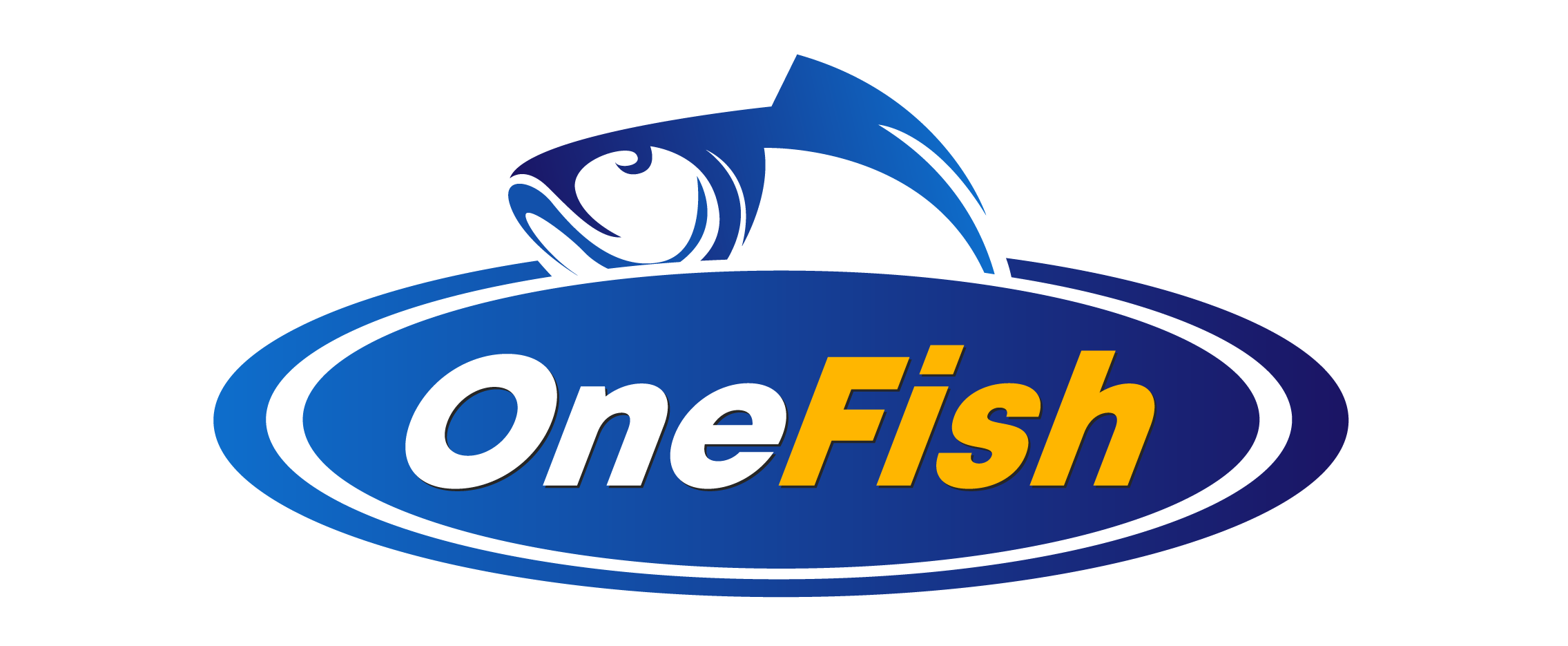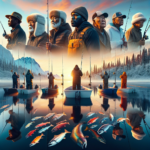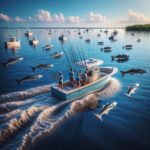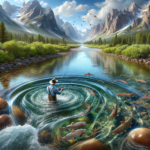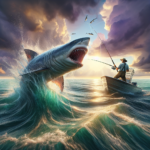Trout Fishing in Colorado’s Rivers and Lakes
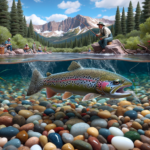
Introduction
Did you know that Colorado boasts over 6,000 miles of fishable rivers and more than 2,000 lakes and reservoirs? This makes it a premier destination for trout fishing enthusiasts. Whether you’re a seasoned angler or a novice looking to cast your first line, Colorado offers a diverse range of fishing experiences that cater to all skill levels.
In this article, we will explore the ins and outs of trout fishing in Colorado’s rivers and lakes. We’ll cover the best fishing techniques, provide detailed information on the various trout species you can expect to catch, and highlight the top fishing spots in the state. Additionally, we’ll discuss seasonal considerations, gear recommendations, and essential safety and conservation practices. By the end of this guide, you’ll be well-prepared to embark on your Colorado trout fishing adventure.
Understanding the intricacies of trout fishing in Colorado is crucial for maximizing your success and enjoyment. Whether you’re looking to find the best fishing spots, master specific techniques, or prepare for an upcoming fishing event, this comprehensive guide has you covered.
Background/Context
Historical or Cultural Significance
Trout fishing has a rich history in Colorado, dating back to the late 19th century when settlers first introduced non-native trout species to the state’s waters. Over the years, trout fishing has become an integral part of Colorado’s outdoor culture, attracting anglers from all over the world. The state’s commitment to conservation and sustainable fishing practices has helped maintain healthy trout populations, ensuring that future generations can continue to enjoy this beloved pastime.
Geographical Overview
Colorado’s diverse geography, ranging from high-altitude alpine lakes to meandering rivers and streams, provides a variety of fishing environments. The state’s climate varies significantly by region, with cooler temperatures and shorter growing seasons in the mountainous areas and milder conditions in the plains. This diversity in climate and topography creates unique habitats for different trout species, making Colorado a versatile fishing destination.
Key Points/Details
Fishing Techniques
Technique Overview
Trout fishing in Colorado can be approached using several techniques, including fly fishing, spin fishing, and bait fishing. Fly fishing is particularly popular due to the state’s numerous clear, fast-flowing rivers and streams. Spin fishing and bait fishing are also effective, especially in lakes and reservoirs.
When and Where to Use
Fly fishing is best suited for rivers and streams, particularly during the spring and summer months when insect hatches are most prolific. Spin fishing and bait fishing are versatile techniques that can be used year-round in both rivers and lakes. Specific locations such as the Arkansas River, Blue River, and Eleven Mile Reservoir are renowned for their excellent trout fishing opportunities.
Recommended Gear
- Fly Fishing: A 9-foot, 5-weight fly rod with a matching reel and floating line is ideal for most Colorado waters. Popular fly patterns include dry flies, nymphs, and streamers.
- Spin Fishing: A medium-light spinning rod paired with a 2000-3000 size reel and 6-8 lb test line works well. Effective lures include spinners, spoons, and soft plastics.
- Bait Fishing: A light to medium spinning rod with a 2000-3000 size reel and 6-8 lb test line is suitable. Common baits include worms, PowerBait, and salmon eggs.
Species Information
Species Overview
Colorado is home to several trout species, including rainbow trout, brown trout, brook trout, and cutthroat trout. Each species has unique habits and preferred habitats:
- Rainbow Trout: Known for their acrobatic fights, rainbow trout prefer cold, clear waters and are often found in rivers and lakes with abundant insect life.
- Brown Trout: These elusive fish are more challenging to catch and prefer deeper, slower-moving waters with plenty of cover.
- Brook Trout: Typically found in high-altitude streams and lakes, brook trout thrive in colder waters and are known for their vibrant colors.
- Cutthroat Trout: Native to Colorado, cutthroat trout are often found in remote, high-elevation waters and are prized for their beauty and rarity.
Best Practices
To successfully catch these trout species, consider the following tips:
- Rainbow Trout: Use small nymphs and dry flies during insect hatches. Focus on riffles and runs where they actively feed.
- Brown Trout: Fish early in the morning or late in the evening with streamers or large nymphs. Target deep pools and undercut banks.
- Brook Trout: Use small dry flies or nymphs in high-altitude streams. Look for them in shallow, well-oxygenated waters.
- Cutthroat Trout: Use attractor dry flies or nymphs in remote, high-elevation lakes and streams. Be prepared for a hike to reach their habitats.
Location Information
Top Fishing Spots
Colorado offers numerous top-tier fishing spots, including:
- Arkansas River: Known for its abundant brown and rainbow trout, the Arkansas River offers excellent fishing opportunities year-round.
- Blue River: This tailwater fishery is famous for its large rainbow and brown trout, particularly in the stretch below Dillon Reservoir.
- Eleven Mile Reservoir: A popular destination for trophy-sized rainbow and cutthroat trout, as well as kokanee salmon.
- Gunnison River: Renowned for its gold medal waters, the Gunnison River is home to large brown and rainbow trout.
- South Platte River: This river offers diverse fishing opportunities, from tailwaters to high-country streams, with healthy populations of rainbow, brown, and cutthroat trout.
Regulations and Licenses
Before fishing in Colorado, it’s essential to familiarize yourself with local regulations and obtain the necessary licenses. Key points include:
- Fishing License: All anglers aged 16 and older must have a valid Colorado fishing license. Licenses can be purchased online or at local retailers.
- Regulations: Be aware of specific regulations for each water body, including catch limits, size restrictions, and seasonal closures. The Colorado Parks and Wildlife website provides detailed information.
- Catch and Release: Practice catch and release whenever possible to help maintain healthy fish populations.
Seasonal Considerations
Seasonal Variations
Fishing conditions in Colorado change throughout the year, requiring anglers to adjust their strategies accordingly:
- Spring: As snowmelt increases water levels, focus on tailwaters and lower-elevation rivers. Insect hatches are prolific, making it an excellent time for fly fishing.
- Summer: High-elevation lakes and streams become accessible, offering prime fishing opportunities. Early mornings and late evenings are the best times to fish due to cooler temperatures.
- Fall: Cooler temperatures and lower water levels make for excellent fishing conditions. Brown trout spawn during this time, making them more aggressive and easier to catch.
- Winter: Ice fishing becomes popular on lakes and reservoirs. Focus on deeper waters where trout are more likely to congregate.
Best Times to Fish
The optimal times to fish in Colorado vary by season and location:
- Spring: Late morning to early afternoon when water temperatures are warmer.
- Summer: Early morning and late evening to avoid the heat of the day.
- Fall: All day, with peak activity in the morning and evening.
- Winter: Midday when temperatures are at their highest.
Events and Tournaments
Event Overview
Colorado hosts several fishing events and tournaments throughout the year, providing opportunities for anglers to test their skills and compete for prizes:
- Trout Unlimited Events: Various local chapters host events and tournaments focused on conservation and community engagement.
- Ice Fishing Tournaments: Popular events like the 11 Mile Marina Ice Fishing Contest attract anglers from all over the state.
- Fly Fishing Competitions: Events such as the Colorado State Fly Fishing Championship offer a platform for competitive fly anglers.
Preparation Tips
To prepare for a fishing event or tournament, consider the following tips:
- Gear Preparation: Ensure your gear is in top condition, including rods, reels, lines, and lures.
- Practice: Spend time practicing your casting and fishing techniques to improve your skills.
- Research: Familiarize yourself with the event location and target species to develop effective strategies.
Tips and Best Practices
General Tips
Here are some practical tips to enhance your trout fishing experience in Colorado:
- Stay Stealthy: Trout are easily spooked, so approach the water quietly and avoid making sudden movements.
- Match the Hatch: Pay attention to local insect activity and use flies or lures that mimic the prevalent species.
- Adjust Your Presentation: Vary your retrieve speed and depth to find what works best for the conditions.
Avoid Common Mistakes
Common mistakes anglers make include:
- Overcasting: Avoid casting too far, as trout are often closer to the shore or bank than you might think.
- Ignoring Water Temperature: Trout are more active in cooler water, so focus on areas with optimal temperatures.
- Using the Wrong Gear: Ensure your gear is appropriate for the target species and fishing conditions.
Advanced Techniques
For more experienced anglers, consider these advanced techniques:
- Euro Nymphing: A highly effective method for catching trout in fast-moving waters using weighted nymphs and a tight line.
- Streamer Fishing: Use large streamers to target aggressive trout, particularly in low-light conditions or during high water.
- Dry-Dropper Rig: Combine a dry fly with a nymph dropper to cover multiple water columns and increase your chances of success.
Gear and Equipment Recommendations
Essential Gear
The essential gear for trout fishing in Colorado includes:
- Rod and Reel: A 9-foot, 5-weight fly rod and reel for fly fishing; a medium-light spinning rod and reel for spin fishing.
- Line: Floating fly line for fly fishing; 6-8 lb test monofilament or fluorocarbon line for spin fishing.
- Lures and Flies: A variety of dry flies, nymphs, streamers, spinners, spoons, and soft plastics.
- Tackle Box: A well-organized tackle box to keep your gear easily accessible.
- Waders and Boots: Chest waders and wading boots for river fishing.
Optional Gear/Upgrades
Consider these additional items to enhance your fishing experience:
- Polarized Sunglasses: Reduce glare and improve your ability to spot fish.
- Fishing Vest or Pack: Keep your gear organized and easily accessible.
- Net: A landing net to safely handle and release fish.
- Float Tube or Kayak: Access remote fishing spots on lakes and reservoirs.
Where to Buy or Rent
You can purchase or rent fishing gear from local shops or online retailers:
- Local Shops: Visit stores like Angler’s Covey in Colorado Springs or Trouts Fly Fishing in Denver for expert advice and quality gear.
- Online Retailers: Websites like Bass Pro Shops, Cabela’s, and Orvis offer a wide selection of fishing equipment.
Safety and Conservation
Safety Tips
Ensure a safe fishing experience by following these tips:
- Weather Considerations: Check the weather forecast before heading out and be prepared for sudden changes.
- Wildlife Hazards: Be aware of local wildlife, including bears and snakes, and know how to respond to encounters.
- Water Safety: Wear a life jacket when fishing from a boat or float tube, and be cautious when wading in fast-moving waters.
Conservation Practices
Help preserve Colorado’s trout fisheries by practicing sustainable fishing:
- Catch and Release: Release fish carefully to minimize stress and injury. Use barbless hooks and handle fish with wet hands.
- Respect Wildlife: Avoid disturbing wildlife and their habitats. Pack out all trash and leave no trace.
- Follow Regulations: Adhere to local fishing regulations, including catch limits and seasonal closures, to help maintain healthy fish populations.
Planning Your Trip
Accommodations
Consider these lodging options near popular fishing spots:
- Arkansas River: Stay at the Royal Gorge Cabins or the Salida Inn & Hostel for convenient access to the river.
- Blue River: The Dillon Inn and Frisco Lodge offer comfortable accommodations near the Blue River.
- Eleven Mile Reservoir: Camp at Eleven Mile State Park or stay at nearby lodges like the Lake George Cabins & RV Park.
Travel Tips
Plan your trip with these travel tips:
- Best Routes: Use major highways like I-70 and US-285 to access popular fishing areas. Check road conditions, especially in winter.
- Transportation: Renting a car is recommended for flexibility and ease of access to remote fishing spots.
- Permits: Some areas may require parking or access permits. Check local regulations before your trip.
Additional Activities
Explore other activities in the area for non-fishing time:
- Hiking: Colorado offers numerous hiking trails with stunning scenery and wildlife viewing opportunities.
- Wildlife Watching: Visit local wildlife refuges and parks to observe native species in their natural habitats.
- Local Attractions: Explore nearby towns and attractions, such as historic sites, museums, and local eateries.
Frequently Asked Questions (FAQs)
Do I need a fishing license to fish in Colorado?
Yes, all anglers aged 16 and older must have a valid Colorado fishing license. Licenses can be purchased online or at local retailers.
What is the best time of year to fish for trout in Colorado?
The best time to fish for trout in Colorado varies by season. Spring and fall offer excellent conditions, while summer is ideal for high-elevation lakes and streams. Winter is popular for ice fishing.
What are the most popular trout species in Colorado?
The most popular trout species in Colorado include rainbow trout, brown trout, brook trout, and cutthroat trout.
What gear do I need for fly fishing in Colorado?
A 9-foot, 5-weight fly rod with a matching reel and floating line is ideal for most Colorado waters. Popular fly patterns include dry flies, nymphs, and streamers.
Are there any fishing tournaments in Colorado?
Yes, Colorado hosts several fishing events and tournaments throughout the year, including Trout Unlimited events, ice fishing tournaments, and fly fishing competitions.
Conclusion
Trout fishing in Colorado’s rivers and lakes offers a diverse and rewarding experience for anglers of all skill levels. By understanding the best fishing techniques, species information, top fishing spots, and seasonal considerations, you’ll be well-prepared to make the most of your fishing adventure. Remember to practice safety and conservation, and consider participating in local events and tournaments to further enhance your experience. With this comprehensive guide, you’re ready to explore the incredible trout fishing opportunities that Colorado has to offer.
So grab your gear, head to the water, and enjoy the thrill of trout fishing in one of the most beautiful states in the country!
